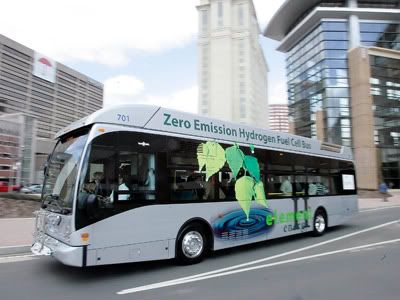
This article was written by www.asm-autos.co.uk, the UK’s leading vehicle salvage agents and experts in the ‘value my car’ market.
The majority of manufacturers are now producing ranges of electric plug-in vehicles (EVs), with the Government investing millions in supporting this young and growing market, giving alternative technologies significantly less press.
However, in America, manufacturers have recently moved into hydrogen fuel cell technology, or H2, which could yet provide the cleanest, most energy efficient fuel solution ever developed.
However, with electric making leaps forward, is H2 technology a case of too little, too late?
How does H2 work?
H2 technology successfully converts hydrogen gas and oxygen into energy via an in-car fuel cell, powering the motor to drive the car. This differs from electric technology as it utilises hydrogen fuel which is stored under pressure in a tank, similar to the way petrol is stored in traditional cars.
One of the advantages of fuel cell technology is that it is fully scalable; if you require more power, you can increase the size of the cell; large fuel cells can therefore be used to power buildings and very small cells used to power electrical equipment like MP3 players.
Environmental benefits
In comparison to conventional electric technology, H2 is better for the environment because it does not produce the level of emissions associated with generating electricity at power stations.
Hydrogen can be derived from natural gas in the atmosphere or produced from water using a process called electrolysis; the only by-product of the process is water vapour and a small amount of hydrogen. This abundant fuel source also gives countries the opportunity to develop independent energy supplies, reducing their reliance on the Middle East.
Energy efficiency
Both fuel cell and electric technology are more energy efficient in comparison to gasoline engines because they send a much higher percentage of energy towards powering the vehicle, with the latter losing energy in heat and friction during combustion.
While earlier prototypes offered direct hydrogen combustion, burning the gas to create energy in the same way petrol is burnt in conventional vehicles, this was a far less efficient energy process.
Toyota’s energy efficiency trial, which tested a range of alternative hydrogen technologies, including hydrogen to electric, saw H2 come out on top as the cleanest and most energy efficient.

Availability and cost
In America, a limited range of H2 cars are available, including the Hyundai Tucson Fuel Cell, the Toyota HCFV-adv and the Mercedes-Benz F-Cell. Toyota have also recently released a new hydrogen fuel cell prototype, the FCV-R.
Like any new technology, fuel cells cars are expensive to produce, and the current range of models therefore come at a high price premium. However, provided that manufacturers are able to build production volumes, these costs will fall in the medium term.
Performance
Manufacturers hope to produce H2 vehicles which perform as well as well current petrol models. Although they offer slightly lower acceleration, newer models are likely to provide quicker, more powerful alternatives as the technology develops.
Offering the quietness and smoothness of an EV with fewer moving parts and simplified design, they are more robust than conventional petrol cars and have the potential to be longer-lasting. While the current crop of vehicles have longevity of 60,000 miles, the next generation are likely to last 3.5 times longer, the same as a conventional car.
Fuel cells can also be replaced relatively easily, involving much less costly processes than repairing a conventional petrol engine.
Safety
Hydrogen has garnered a reputation for being explosive following a major airship disaster in Hindenburg in 1937. However, hydrogen is no more unsafe than petrol, which is highly flammable and explosive, but has safely fuelled the passenger car market since its inception.
The current range of H2 vehicles are fitted with effective systems to reduce risk of explosion, and the technology is therefore as safe as any other on the market.
Infrastructure
In America, lack of hydrogen fuelling infrastructure has restricted sales of fuel cell cars hugely. Although California has plans for the construction of 100 hydrogen stations, it will be a while until the consumer market catches on.
In the longer term, petrol fuel stations could easily be converted to accommodate hydrogen gas, underground pipes or trucks used to distribute the fuel. With this in mind, the US Government has developed the H2USA programme, joining forces with manufactures, agencies, gas suppliers, and fuel cell providers.
In the UK the Government has responded by setting up the UKH2Mobility scheme, collaborating with major players from the gas, car manufacturing and related support industries to develop the technology further:
“This country has a number of world-class companies that are developing exciting technologies in both the hydrogen energy and automotive value chains and it is vitally important that we identify what is required to make these cars a realistic proposition for UK consumers,” said UKH2Mobility’s Mark Prisk.
“UKH2Mobility will bring together industry expertise to establish the UK as a serious global player in the manufacture and use of hydrogen fuel cell electric vehicles and the supporting infrastructure,” he added.
Race to the top
With electric technology already advancing across America and Europe, and governments investing heavily in electric charging infrastructure, some feel that H2 has emerged a little too late to make a significant impact on the car market, and could be brushed aside.
Manufacturers have already invested hundreds of millions in developing commercialised electric and hybrid vehicles, with the UK Government backing electric technology heavily. There is also the chance that a rival technology will be created, with Peugeot recently unveiling a car that can be successfully powered by air.
However, provided that car manufacturers and governments put energy efficiency first, there is no reason why hydrogen cannot become the next prime source of automotive fuel. It’s certainly an exciting time to be involved in the automotive industry.






